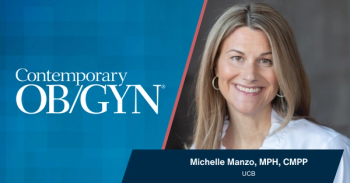
AAP issues updated guidance on contraception for adolescents
The American Academy of Pediatrics urges clinicians to offer confidential, adolescent-centered contraceptive care using evidence-based, equity-informed approaches.
The American Academy of Pediatrics (AAP) has issued updated guidance calling for pediatricians to take a comprehensive, adolescent-centered approach when providing contraceptive care. The policy statement, “Contraception for Adolescents,” published in the July 2025 issue of Pediatrics, replaces the previous 2014 guidance and reflects the latest evidence, policy context, and best practices. It is accompanied by a detailed clinical report titled “Contraceptive Counseling and Methods for Adolescents.”
The AAP recommends that pediatricians provide developmentally appropriate contraceptive counseling and access to a full range of contraceptive methods, including long-acting reversible contraception (LARC), hormonal contraceptives, barrier methods, and emergency contraception. These services should be offered within a framework that promotes equity, shared decision-making, and adolescent autonomy.
“Education and access to contraception is an essential part of the teenager’s health care needs,” said Mary A. Ott, MD, MA, FAAP, a lead author of the policy statement. “While many teens will want to involve a parent, caregiver, or other trusted adult in their decision-making, others may not feel safe or comfortable doing so. We know from research that when teens don’t have access to confidential conversations, they’re less likely to get the health services they need, less likely to use birth control, and more likely to experience an unplanned pregnancy.”
According to national survey data cited in the policy, 16% of 9th-grade students and 48% of 12th-grade students report having had sexual intercourse. Of those, only 52% report condom use and 33% report using any form of hormonal contraception during their last sexual encounter. The AAP emphasizes that these rates demonstrate an ongoing need for proactive, evidence-based contraceptive counseling and access.
The updated guidance encourages pediatricians to initiate confidential, one-on-one conversations with adolescents regardless of whether a parent or guardian is present. “We recommend pediatricians explore a teen’s reproductive health goals and birth control knowledge and preferences without making assumptions,” said Andrea J. Hoopes, MD, MPH, FAAP, another author of the policy statement. “Understanding the full range of options will help the pediatrician guide teens in choosing a birth control method that meets their individual needs and circumstances.”
Currently, 27 states have laws that explicitly permit minors to consent to contraceptive care, and another 19 states allow certain groups of minors to do so. The AAP advises pediatricians to remain informed about relevant state laws and, when legally permissible, to provide confidential care to adolescents. The policy notes that confidentiality is associated with greater use of contraceptive services and reduced rates of unintended pregnancy.
To further expand access, the AAP recommends pediatricians support and utilize alternative care pathways such as telehealth, mobile and online applications, pharmacist prescribing, and school or college health services. These modalities are particularly important for adolescents in communities where access to in-person contraceptive services is limited.
The statement also addresses the importance of integrating contraceptive counseling into broader conversations about sexual and reproductive health. Pediatricians are encouraged to screen for sexually transmitted infections (STIs), offer human papillomavirus (HPV) vaccination, and discuss issues related to healthy relationships and interpersonal violence.
To support implementation, the AAP calls for pediatric training programs and continuing education to equip clinicians with the skills necessary to offer the full spectrum of contraceptive options, including insertion and removal of LARC methods or appropriate referral pathways.
“Pediatricians can help answer questions that teens might be afraid to ask, in a way that is honest, compassionate, informed by science, and centered on care,” said Ott. “Education on reproductive health is an important step toward every adolescent’s journey into independence and adulthood.”
References:
1. AAP. American Academy of Pediatrics Updates Guidance on Contraception. AAP. Press release. June 16, 2025. Accessed June 17, 2025.
2. Ott MA, Hoopes AJ, Sucato GS, et al. Contraception for Adolescents: Policy Statement. Pediatrics. Published online June 16, 2025. doi:https://doi.org/10.1542/peds.2025-072217
Newsletter
Get the latest clinical updates, case studies, and expert commentary in obstetric and gynecologic care. Sign up now to stay informed.










